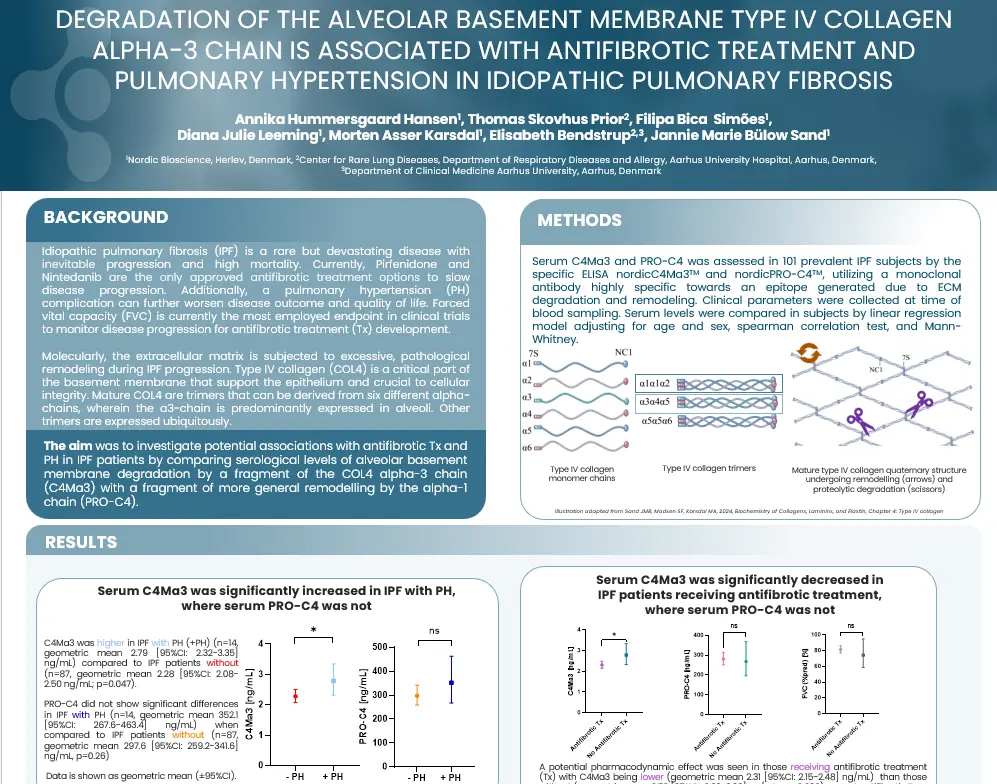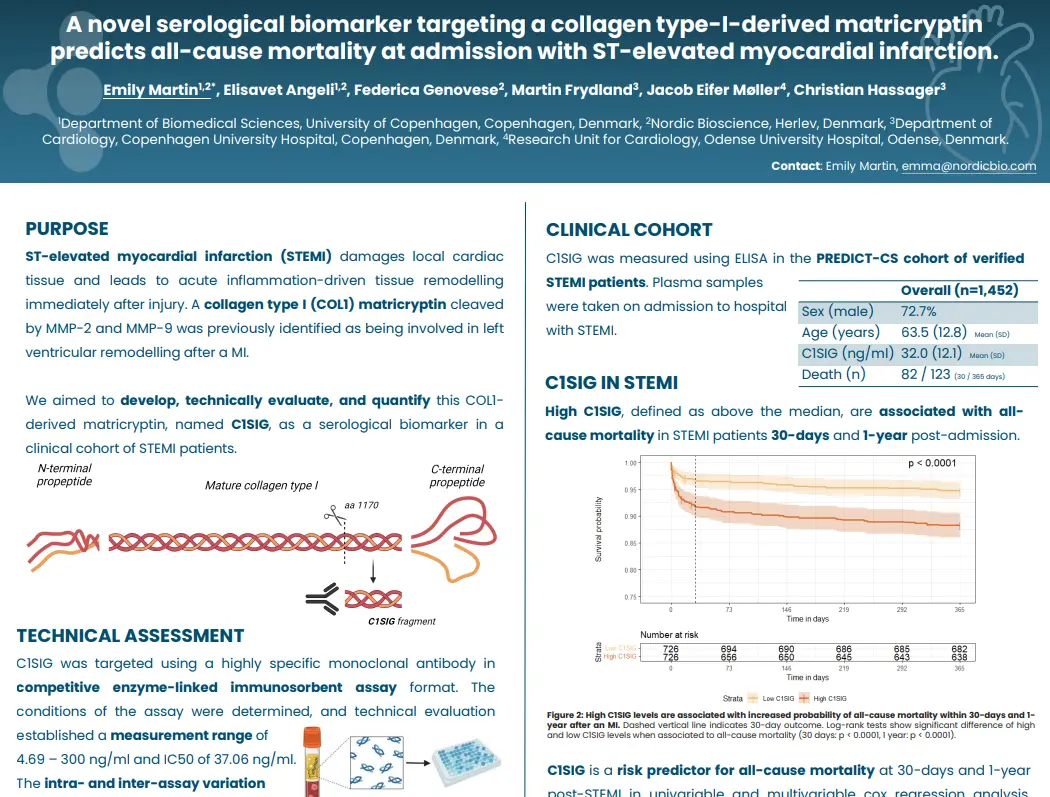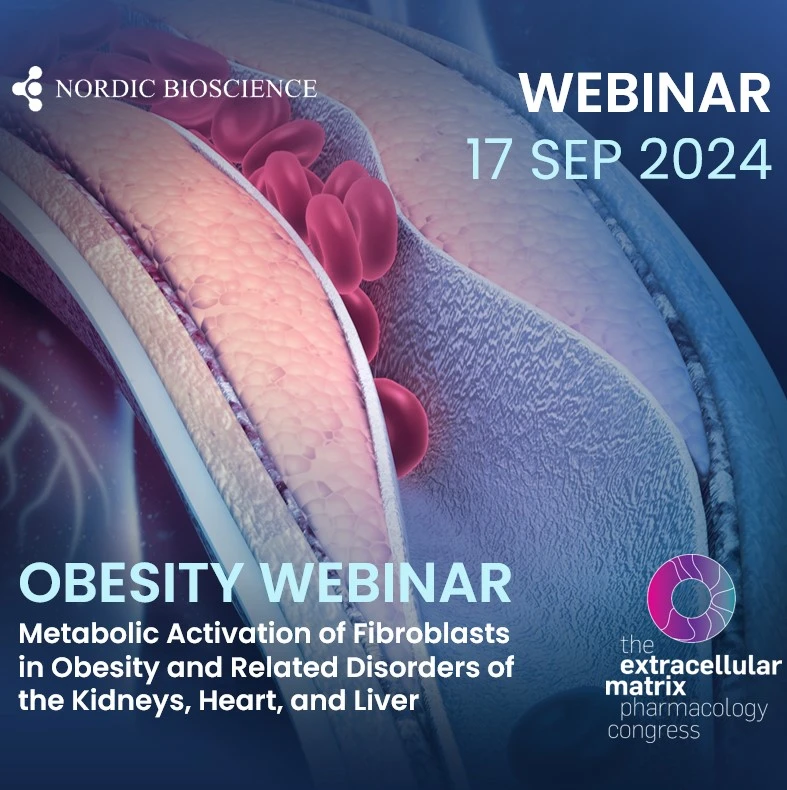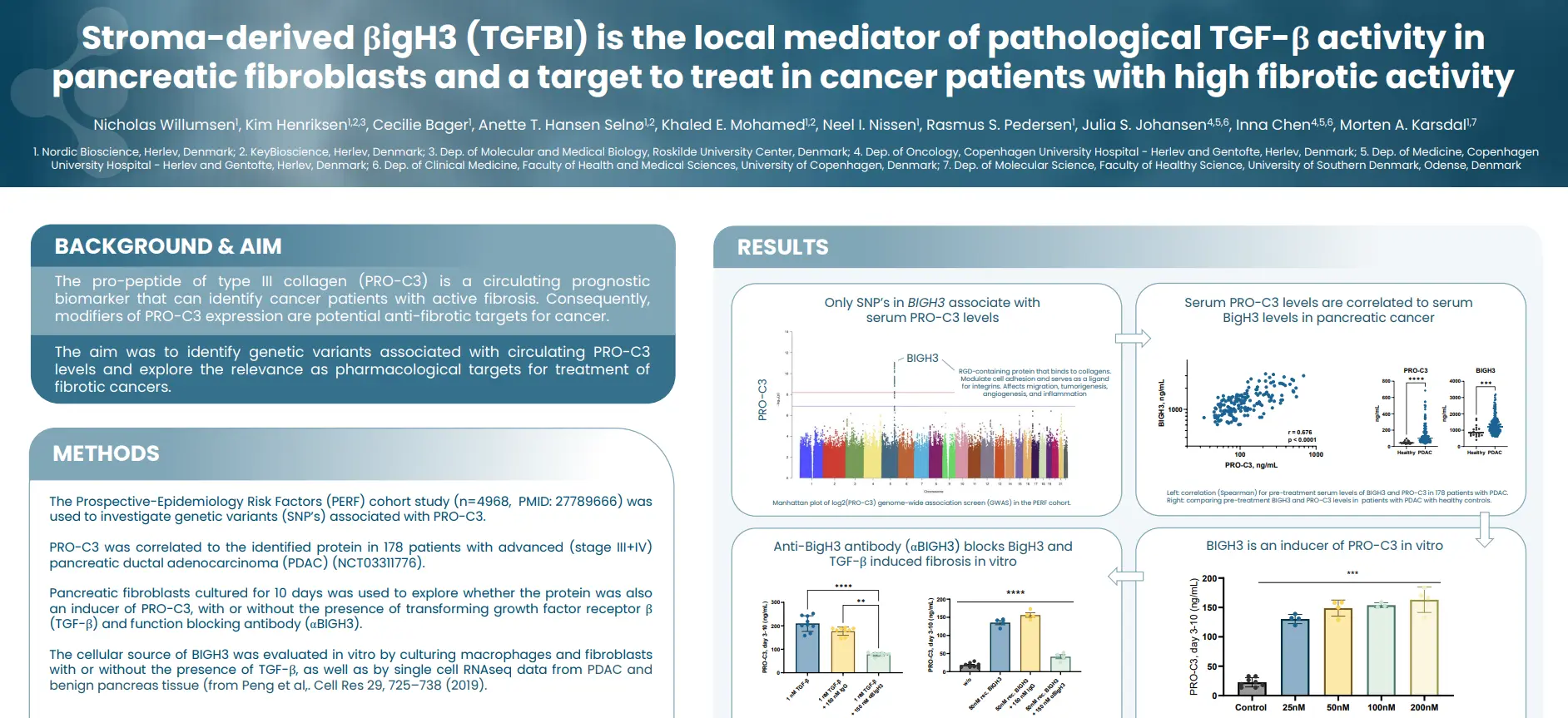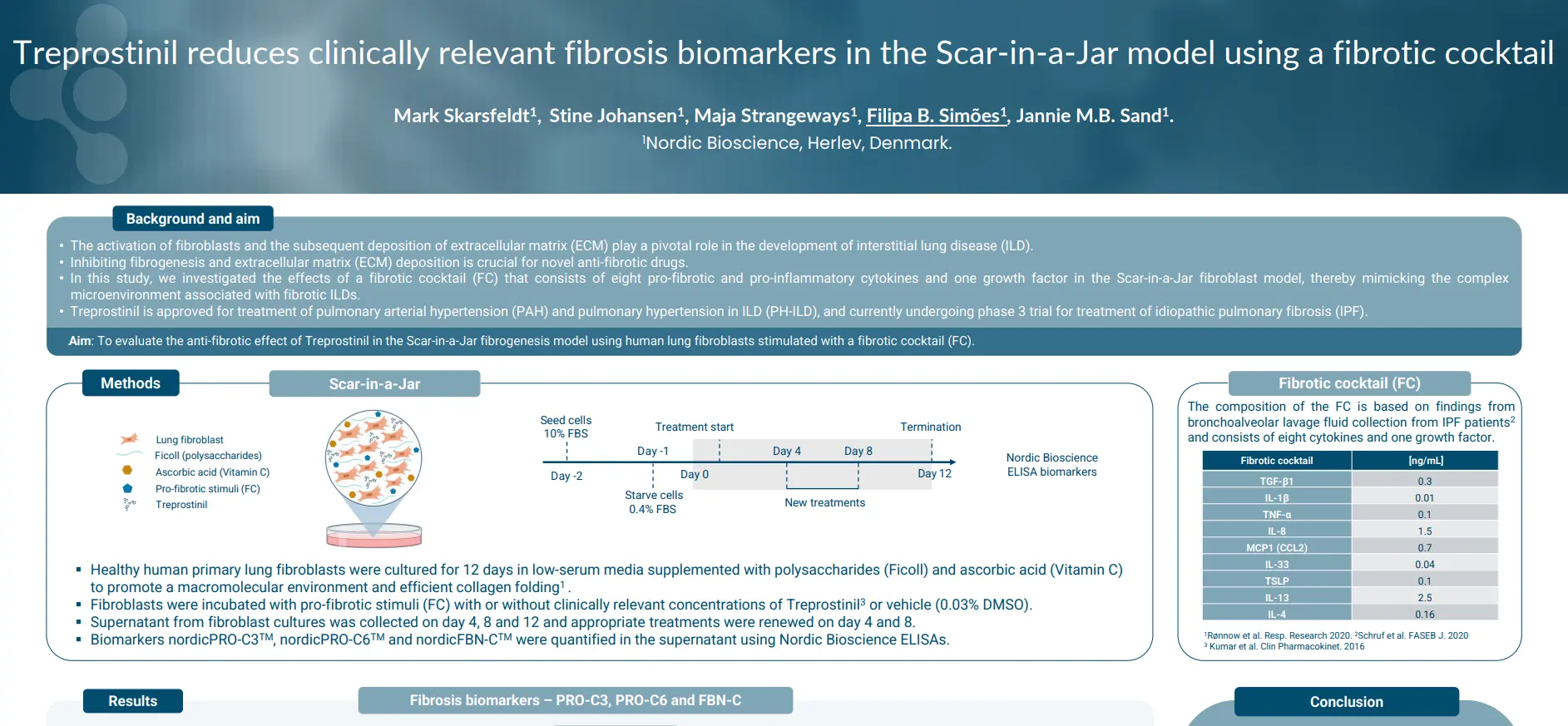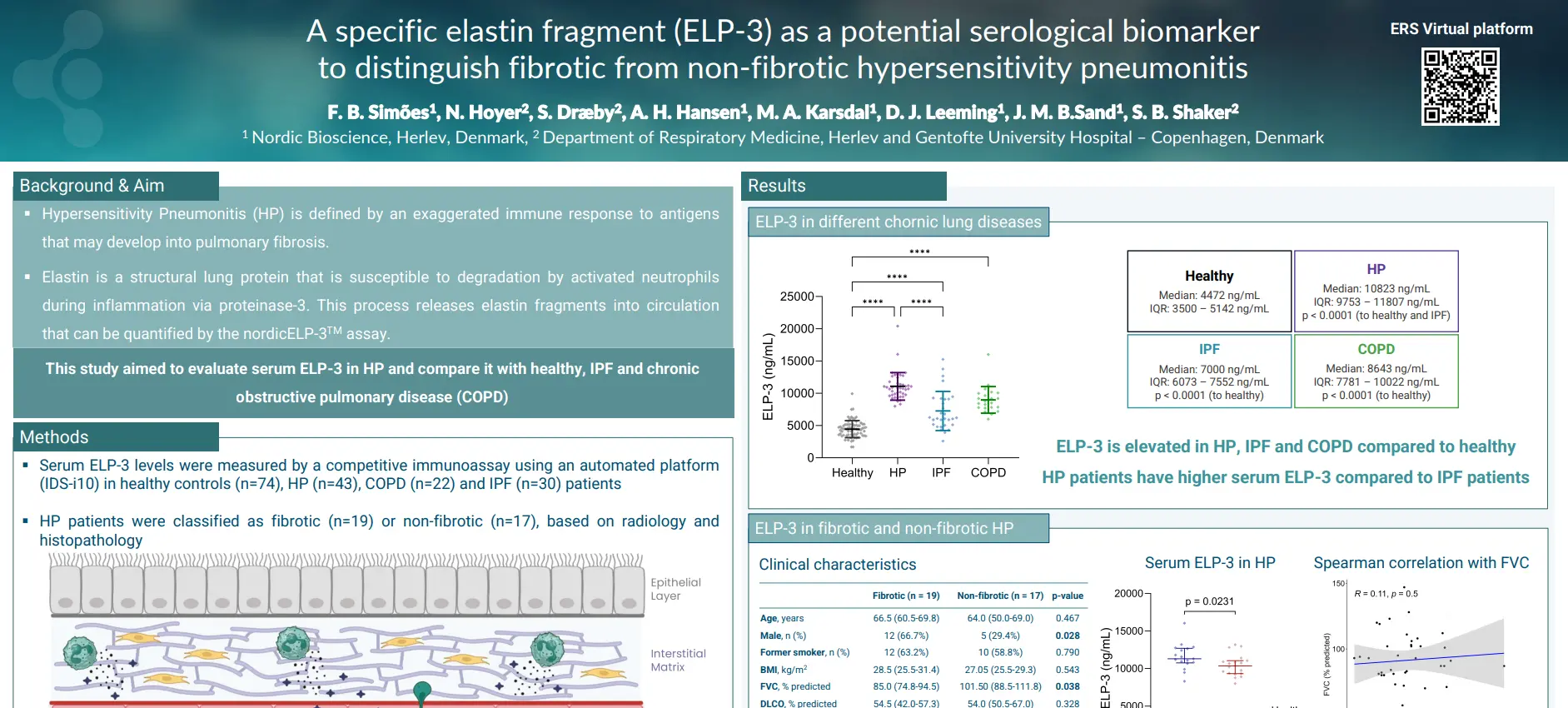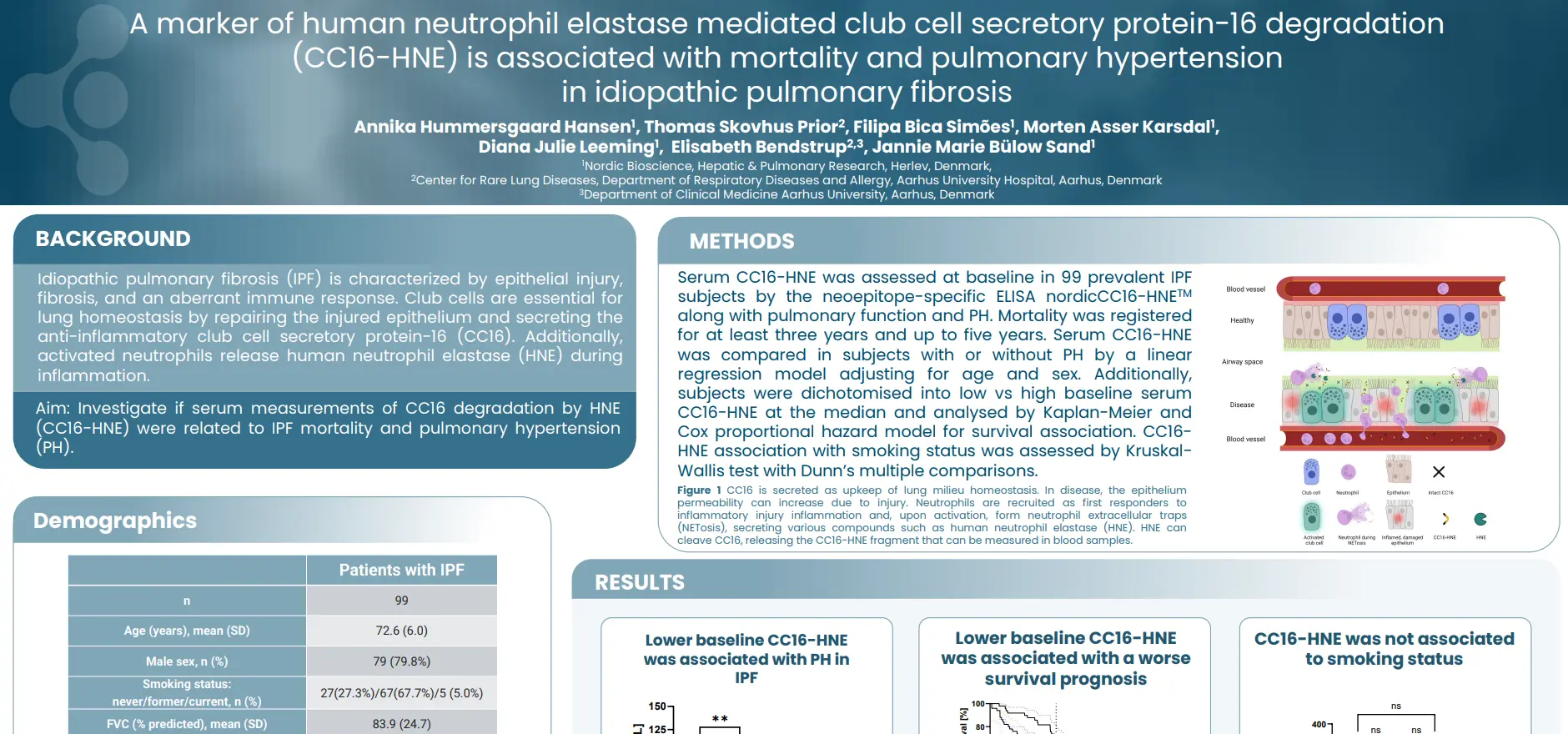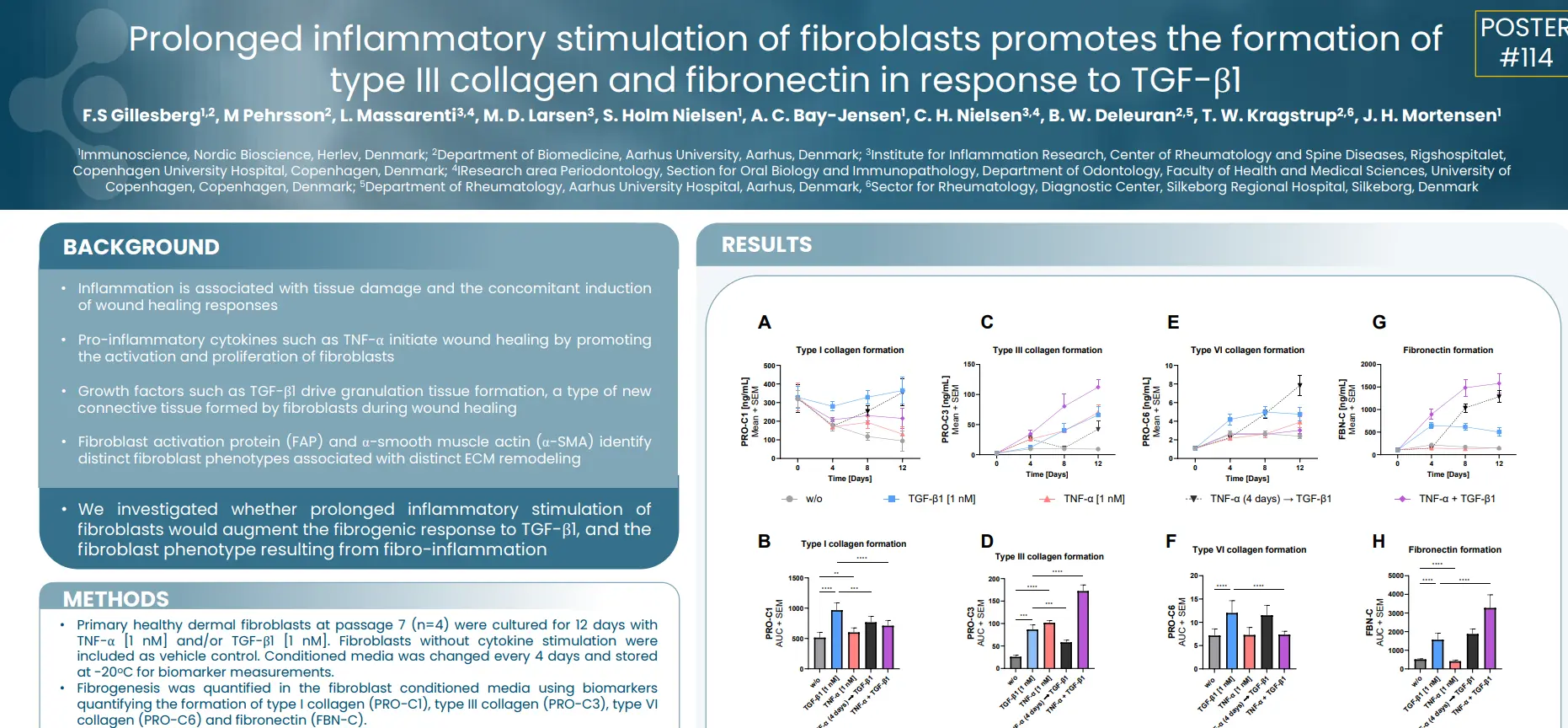Degradation of the alveolar basement membrane type IV collagen alpha-3 chain is associated with antifibrotic treatment and pulmonary hypertension in idiopathic pulmonary fibrosis
Introduction
Idiopathic pulmonary fibrosis (IPF) is a rare but devastating disease with inevitable progression and high mortality. Currently, Pirfenidone and Nintedanib are the only approved antifibrotic treatment options to slow disease progression. Additionally, a pulmonary hypertension (PH) complication can further worsen disease outcome and quality of life. Forced vital capacity (FVC) is currently the most employed endpoint in clinical trials to monitor disease progression for antifibrotic treatment (Tx) development.
Molecularly, the extracellular matrix is subjected to excessive, pathological remodeling during IPF progression. Type IV collagen (COL4) is a critical part of the basement membrane that support the epithelium and crucial to cellular integrity. Mature COL4 are trimers that can be derived from six different alpha-chains, wherein the a3-chain is predominantly expressed in alveoli. Other trimers are expressed ubiquitously.
The aim was to investigate potential associations with antifibrotic Tx and PH in IPF patients by comparing serological levels of alveolar basement membrane degradation by a fragment of the COL4 alpha-3 chain (C4Ma3) with a fragment of more general remodeling by the alpha-1 chain (PRO-C4).
Poster
Conclusion
The COL4 alpha-3 chain has limited tissue distribution and is crucial for alveolar function. In this study, higher levels of COL4 alpha-3 chain degradation (C4Ma3) was:
- found in IPF with PH.
- associated with no antifibrotic treatment, indicating a pharmacodynamic potential.
In comparison, the COL4 alpha-1 chain marker PRO-C4, indicating ubiquitous basement membrane remodeling, did not show statistically different levels between any of the groups compared in this study. This could highlight the fact that damage done within alveoli are especially relevant when assessing the effect of antifibrotic Tx and PH in IPF.
